Bergisel Ski Jumping Stadium
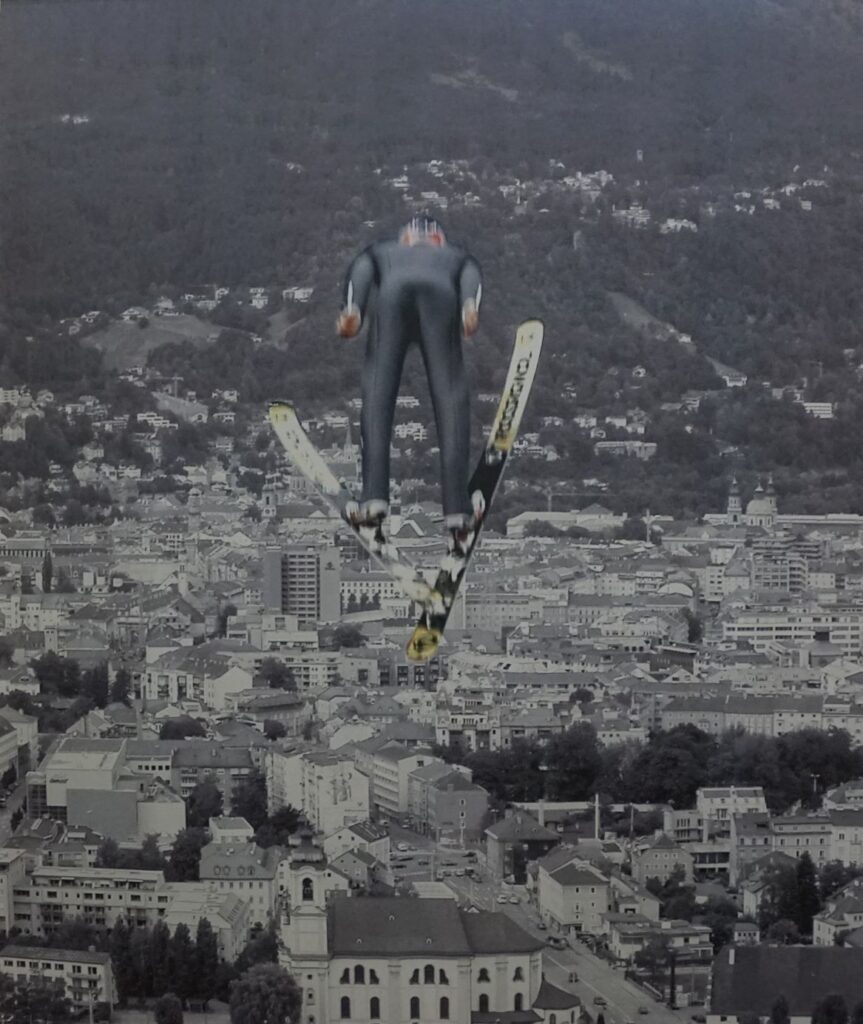
Long suffering readers of Midlife Crisis Odyssey will be familiar with my love of the Olympics. Summer or winter games, the Olympics are a two week festival of sport that has me glued to the telly. I’ve been lucky to visit a few Olympic sites during my travels, and when I arrived in Innsbruck, I was keen to add another one to the list.
Innsbruck was the host of the 1964 and 1976 winter games, and today one of the city’s most popular tourist attractions is the Bergisel Ski Jumping Stadium. During a break in the drizzly winter weather, I walked up the hill from my apartment to have a look.
As a kid watching the Winter Olympics in Australia, I used to marvel at the weird, wonderful and downright suicidal sports that made up the Games. And when it comes to sheer guts and lunacy, it doesn’t get much crazier than ski jumping. Even though many winter sports look nuts on the TV, when you see the venues where the action takes place it’s a whole new level of insanity.
You can see the Bergisel Ski Jumping Stadium from town; built on the mountain range that runs east/west on the north side of Innsbruck. Following the winding path up from the railway line, I reached the ticket office and handed over my euros. Passing through the gate, I got my first look at an international-standard ski jumping facility. Come to think of it, it was the my first look at any type of ski jumping facility. It was mind-blowing.

Standing in the spectator’s amphitheatre, my first thought was how bloody steep it all was. The ramp was steep, the landing area was steep, and the ‘braking hill’ that runs uphill to slow the athletes down after their jump was steep. It looked completely nuts.
After gawping open-mouthed like a simpleton for arguably a little too long, I climbed the steps beside the braking hill to reach the southernmost side of the stadium.
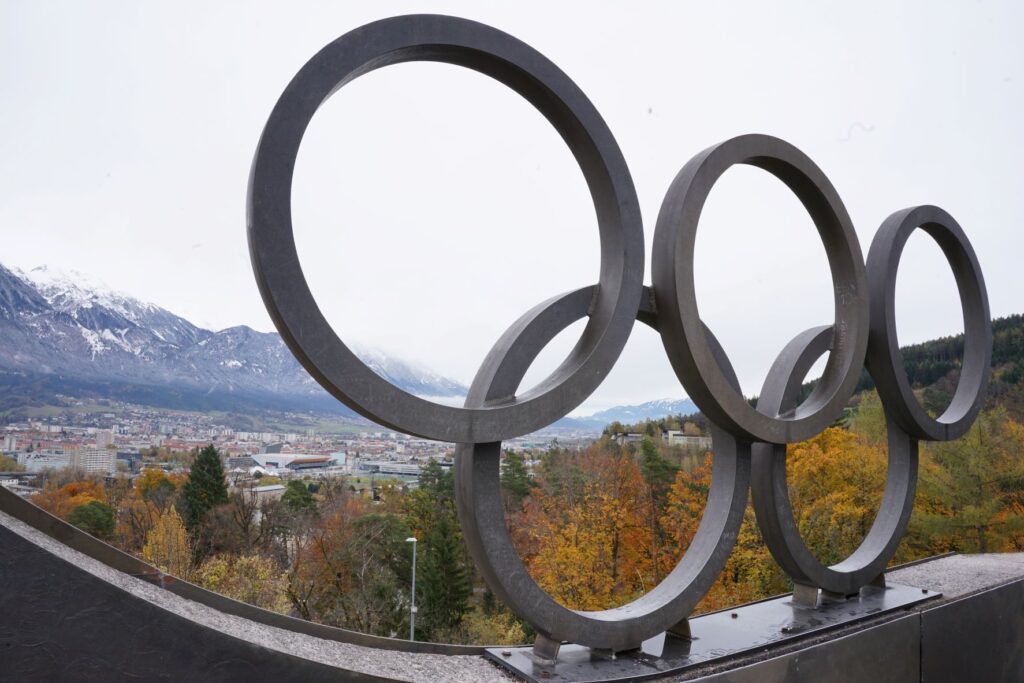
Here the Olympic Rings stood proud as punch, overlooking Innsbruck, Olympic City.
Them big ol’ rings
Three mushroom-like structures rose alongside, which held the Olympic flame during the Games (the third was for the Youth Olympics held in 2012). At the base of two of the mushrooms was a series of brass plaques commemorating the medal winners at the ‘64 and ‘76 Games.
Heading back down the steps, I saw a sign above a doorway leading into the administrative buildings which said ‘Photo Gallery’. It all looked a bit closed up, but I pushed on the door and it opened, so in I went. The ‘Gallery’ looked like it was in the middle of being dismantled, but what was left included some interesting displays. One was a diagram giving some vital stats for the facility.
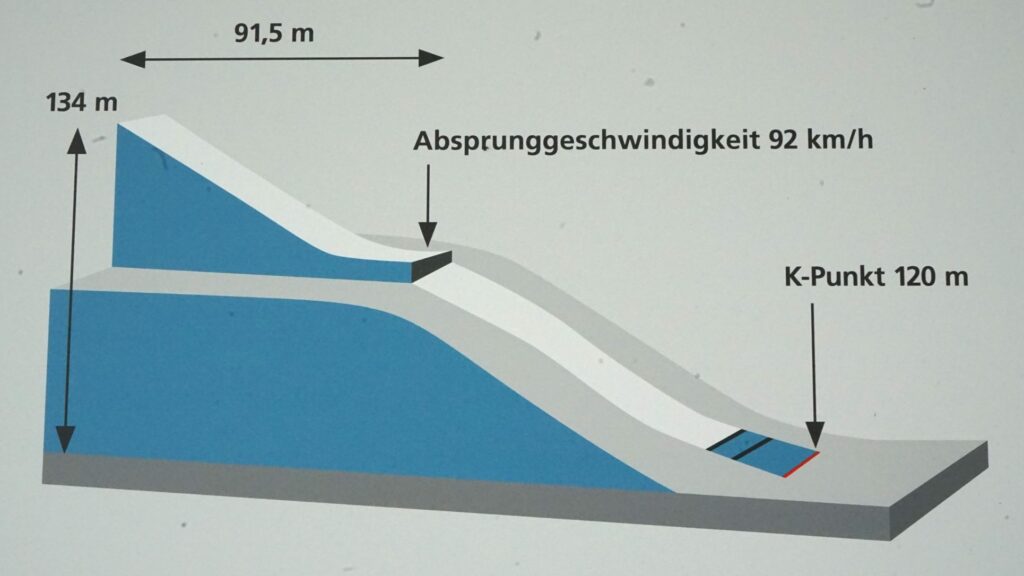
The information stated: ‘The landing slope measures up to 37 degrees. A jump onto the K-point is worth 60 distance points, for each meter +/- additional distance points are added or subtracted. The inrun features a plastic track. During the summer it is lubricated with water and in the winter it is covered with 30cm of packed snow. The inrun is 98 metres long and has a slope of up to 35 degrees. Within 4 seconds after the start the jumper reaches above 90km/h.’
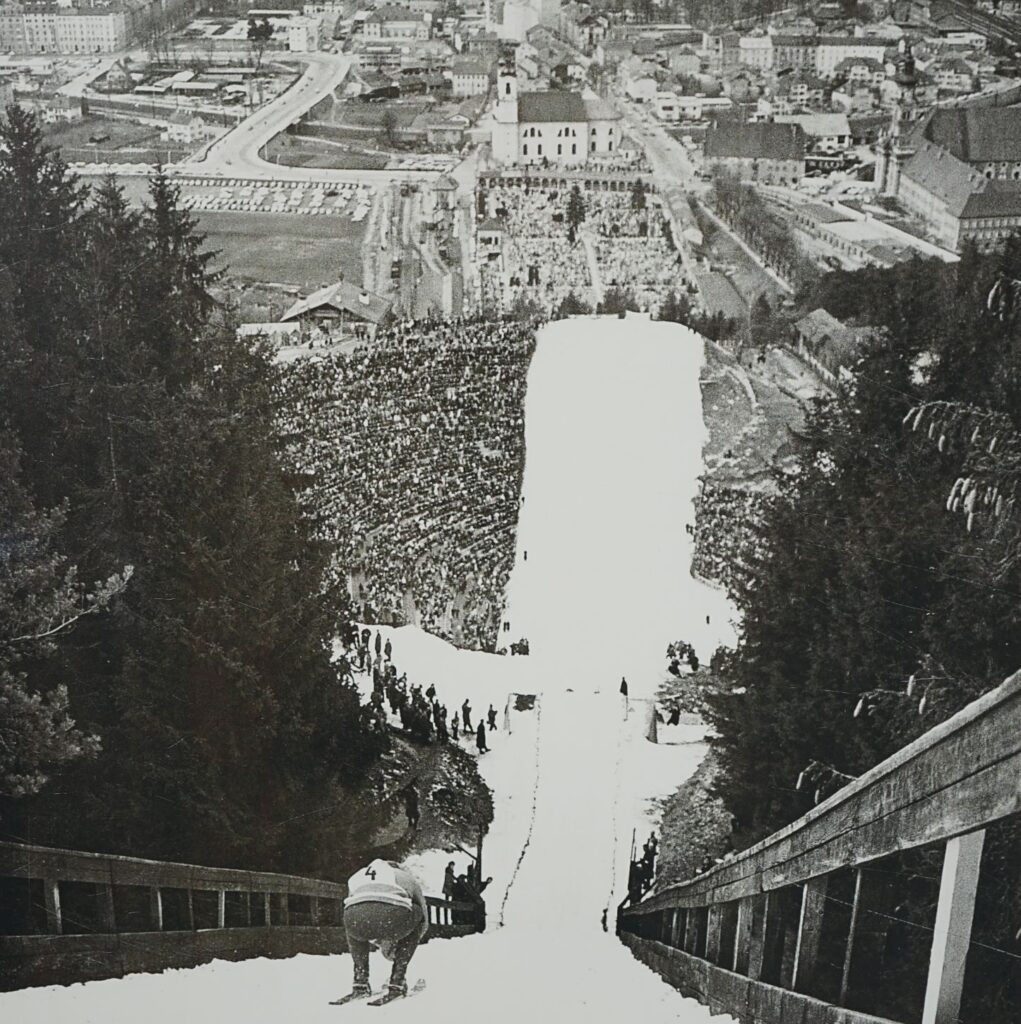
To put that into perspective, the steepest road on earth is Dunedin’s Baldwin Street in New Zealand, which at its steepest point(s) is 21 degrees. So imagine the steepest street in your area, add significantly more steepness, then picture yourself standing on the top of it wearing a spandex suit and inline skates.
‘Shiiit……shiiiiiiiiiiiiiiiit…….’
Then imagine accelerating at a rate comparable to a high performance sports car doing a 0-100km/h speed test and you have some idea of what Olympic ski jumping is about.
‘I’m still alive!’
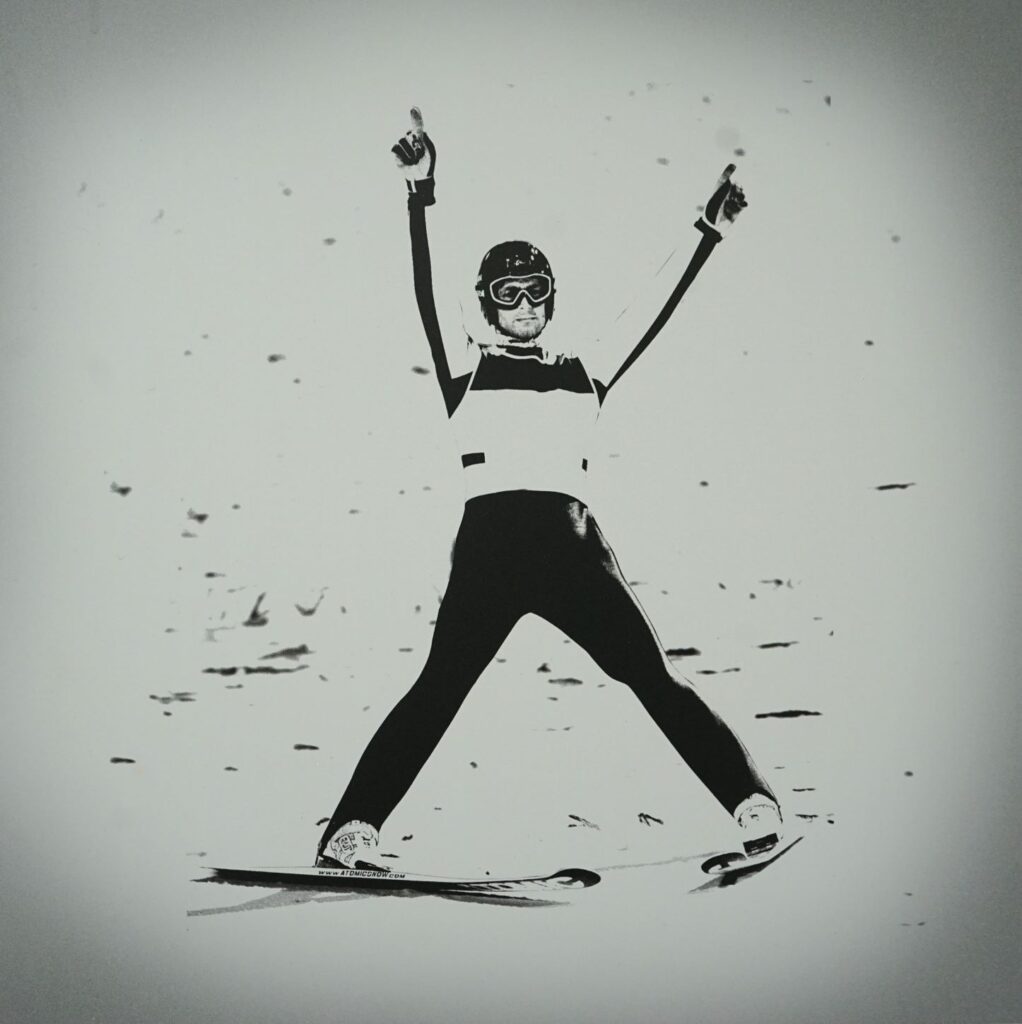
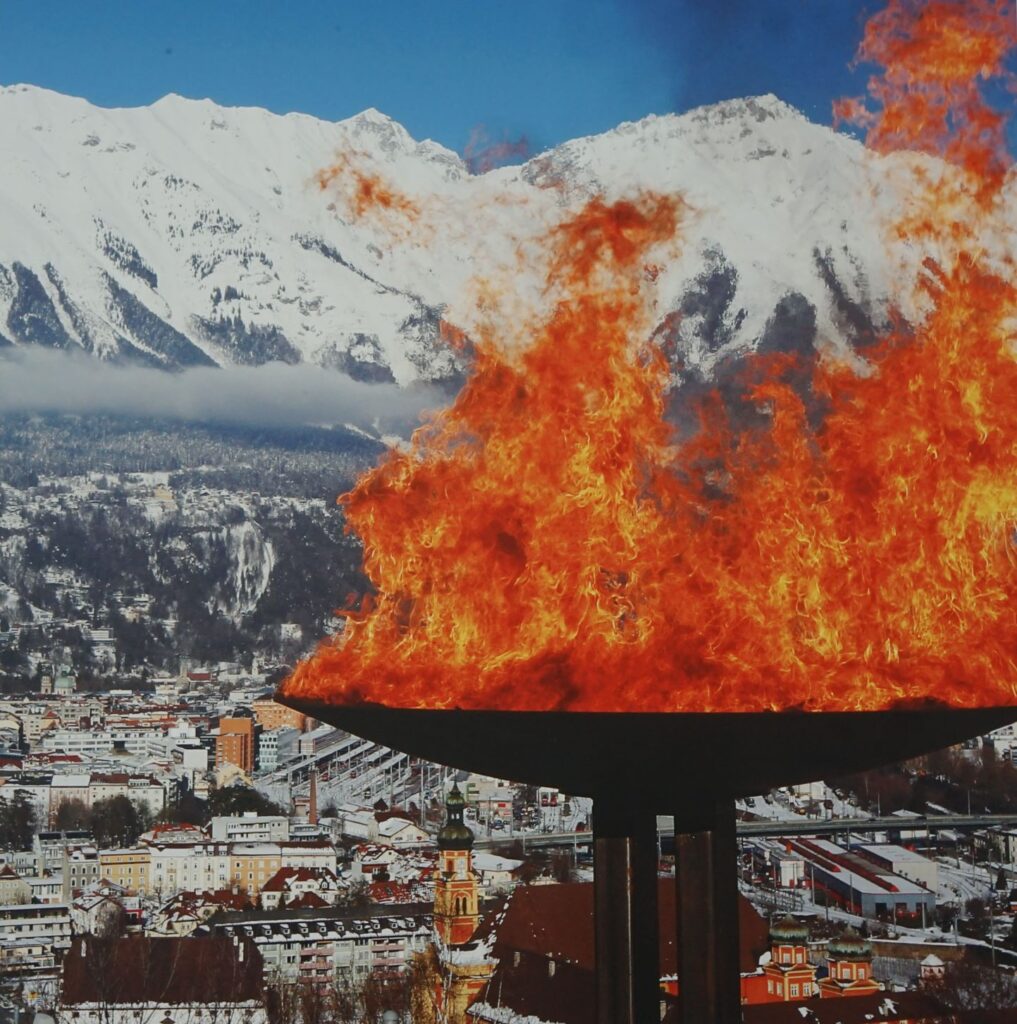
After checking out the rest of the displays in the Photo Gallery, it was time to climb the steps beside the spectator’s area all the way to the top of the ramp, then up the tower to where the jumpers begin their (usually) death-defying run.
‘Reckon those spuds are ready yet?’
Close-up, the landing surface for summer training looked like a cover of brush bristles. During the ascent, you really can appreciate how steep the landing area really is.
Innsbruck brush makers really cashed in
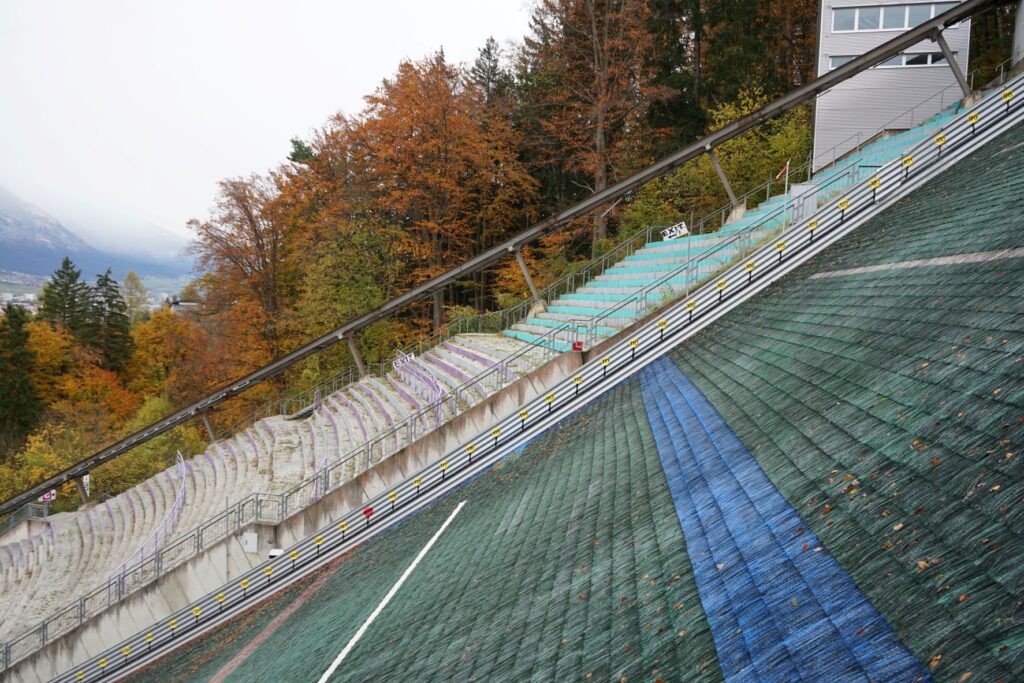
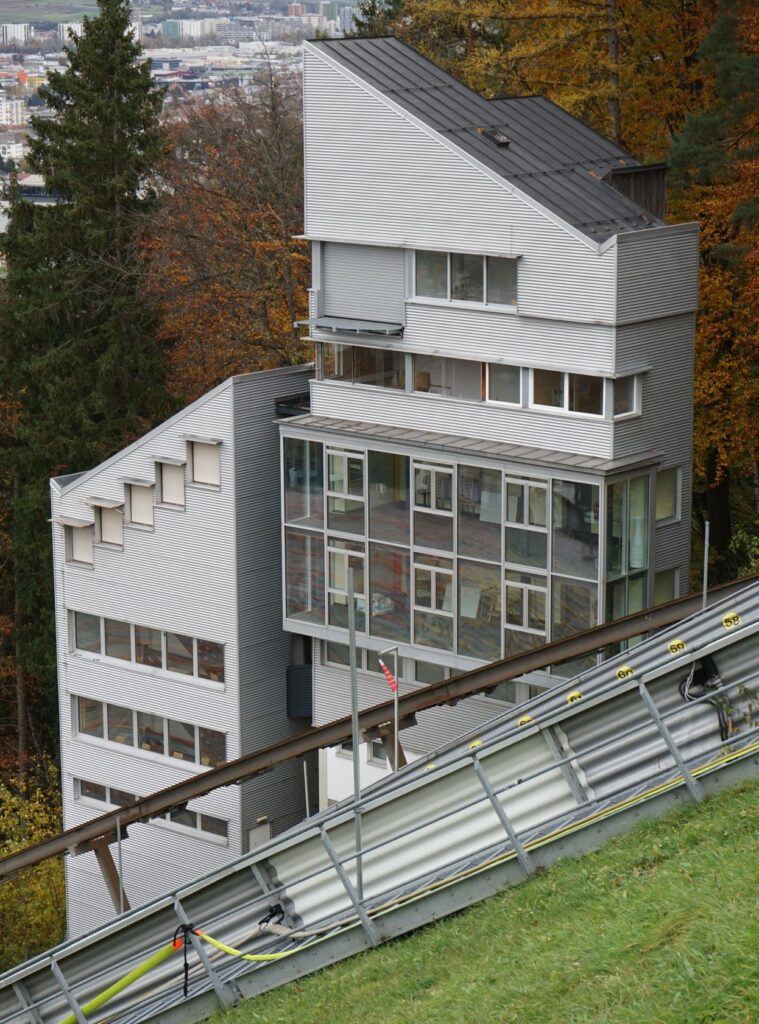
A little downslope of the end of the ramp is the judges tower. The diagonally-arranged windows on the building to the left is where the judges sit. During competition, five judges from five different nations ‘award points for each jump’, and ‘posture, style, length and landing are judged’.
The prime viewing seats always booked out early
While judges B to E lodged their scores, judge A was wondering if he had missed the jump
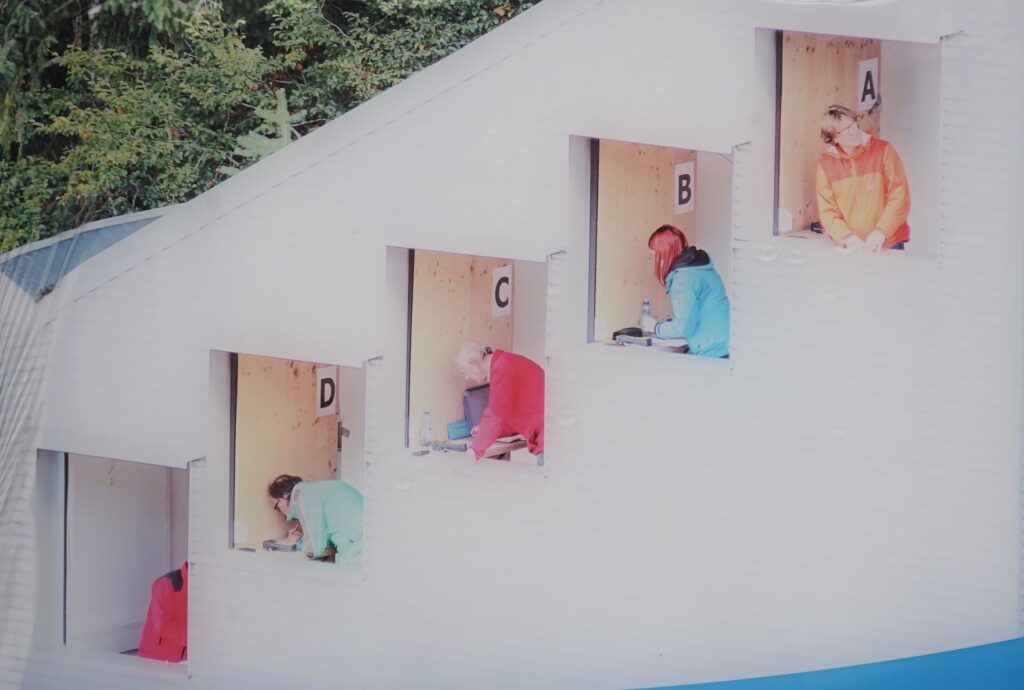
Although the location is the same, the facilities have changed a bit since the Olympics were last held at Innsbruck.
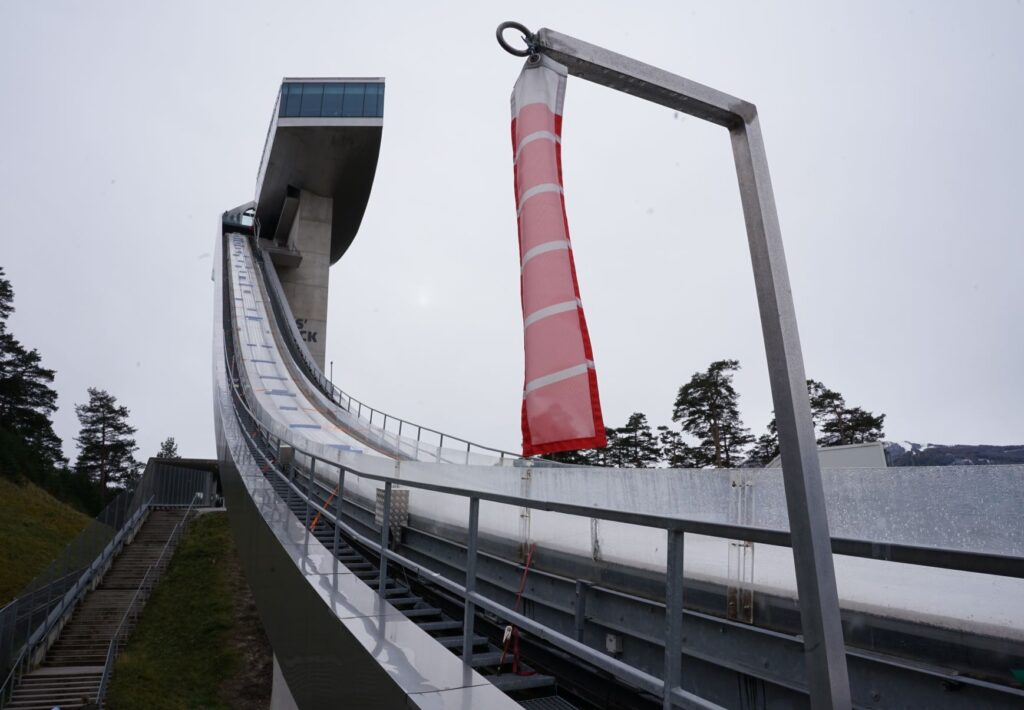
The 50 metre-high tower that supports the jump ramp was built in 2002, and includes facilities for athletes, administrators, a viewing platform and a flash restaurant.
The windsock ain’t for show
The view from the top-most outside platform was breath-taking.

Access to the viewing area that looks directly down upon the athletes’ starting position isn’t clearly marked. I ended up walking down the flight of stairs inside the tower from top to bottom and back up again before I finally found it. The time and effort was far from wasted however, as the stairwell was adorned with photographs of ski jumping legends.

Austrian Karl Schnabel won a gold medal at the Innsbruck Winter Olympics in 1976.
Karl would have been even more successful if he hadn’t insisted on wearing a beanie with a pom-pom. Scientists would later prove the extra drag cost him a metre on his personal best
Michael ‘Eddie the Eagle’ Edwards was the first Pom to compete in ski jumping since 1928 when he slid into the spandex and snapped on the skis for the1988 Calgary Olympics. Despite finishing last in both events he entered, he was tough and gutsy and justifiably became a legend who truly embodied the Olympic spirit.
Eddie once said ‘I think the only bones I haven’t broken are my shoulder, hip and thigh’
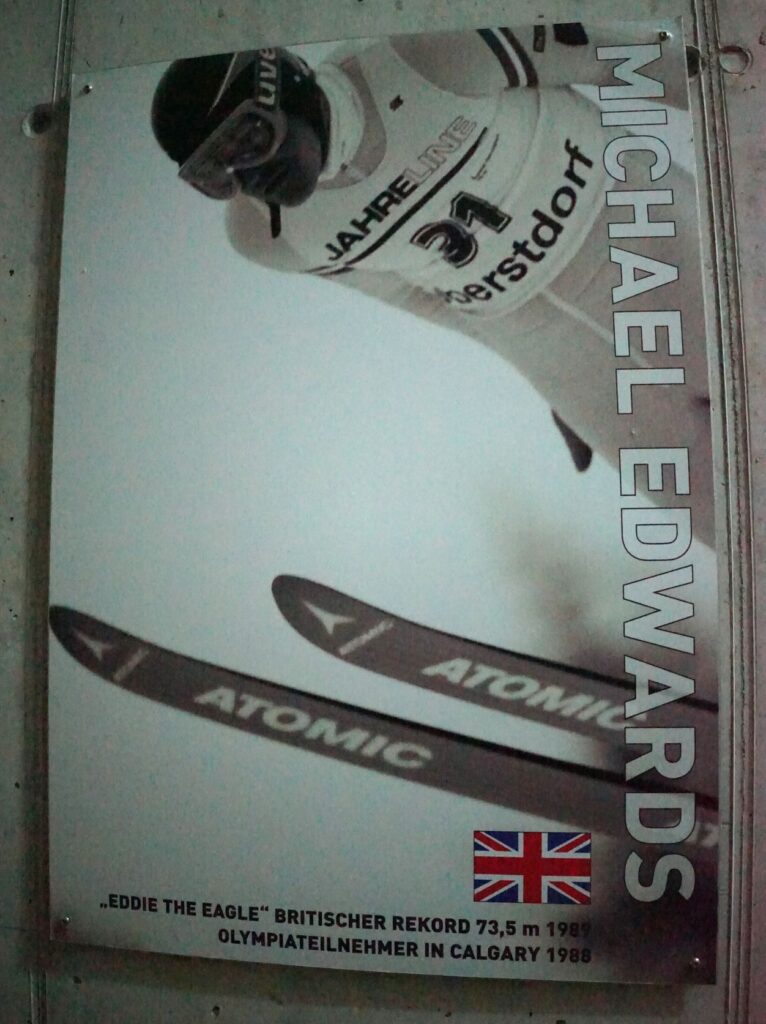
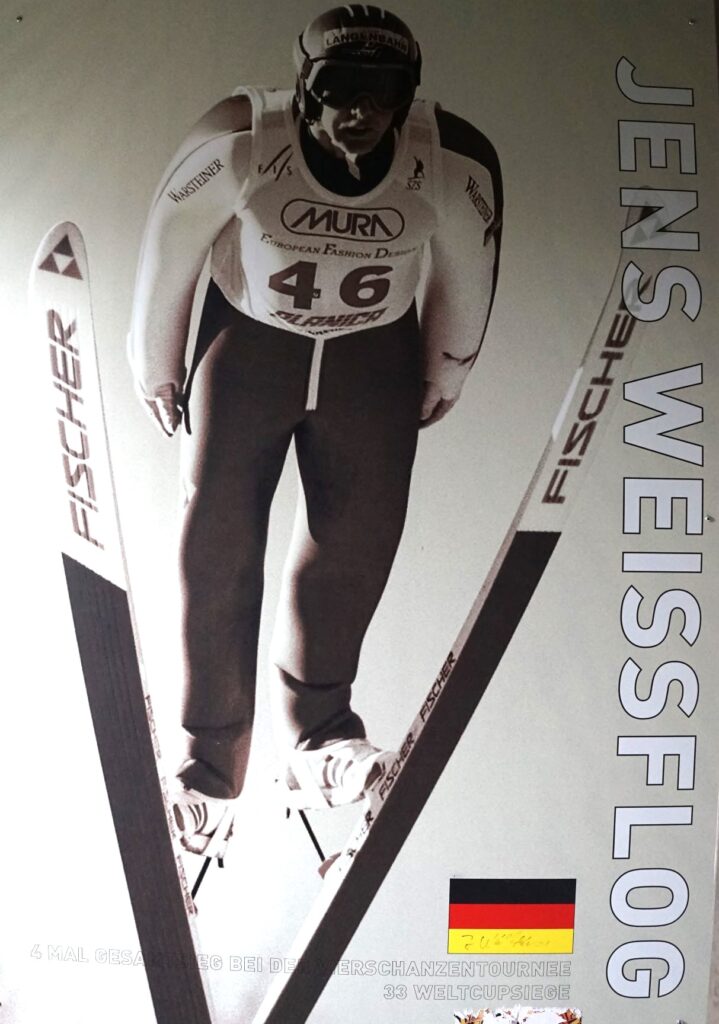
German Jens Weissflog won Olympic gold in 1984 at the Sarajevo Olympics, and two more ten years later at Lillehammer.
Jens’ helium filled suit caused a scandal
Access to the ‘start line’ viewing area turned out to be via the restaurant, and after making my way through the happy diners, I soon had an athlete’s eye view of the mighty Bergisel Ski Jump. It was dizzying.
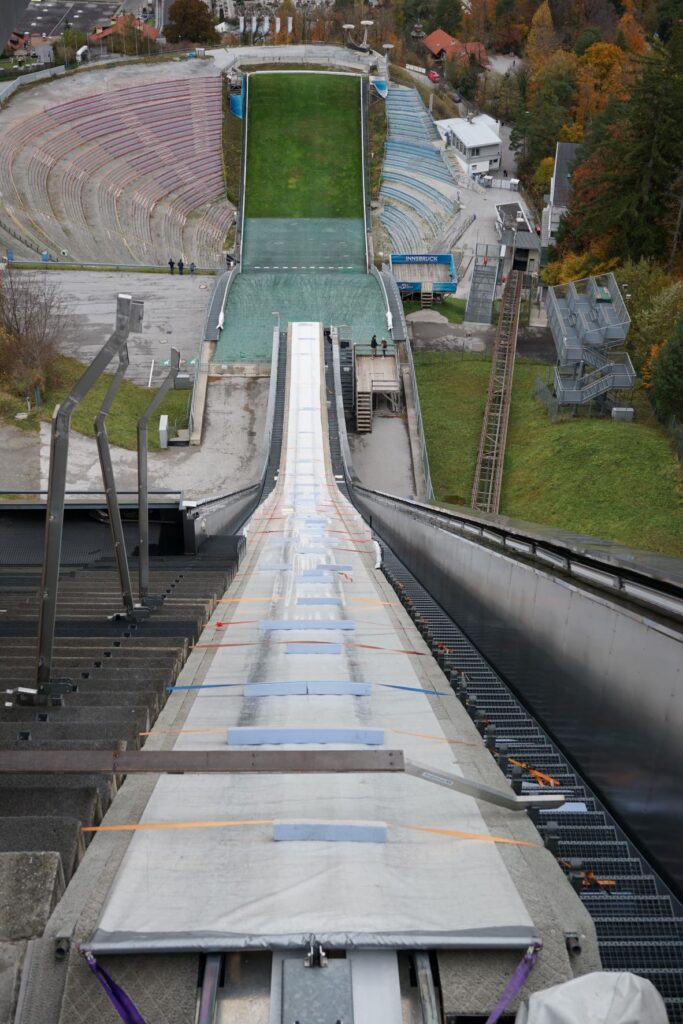
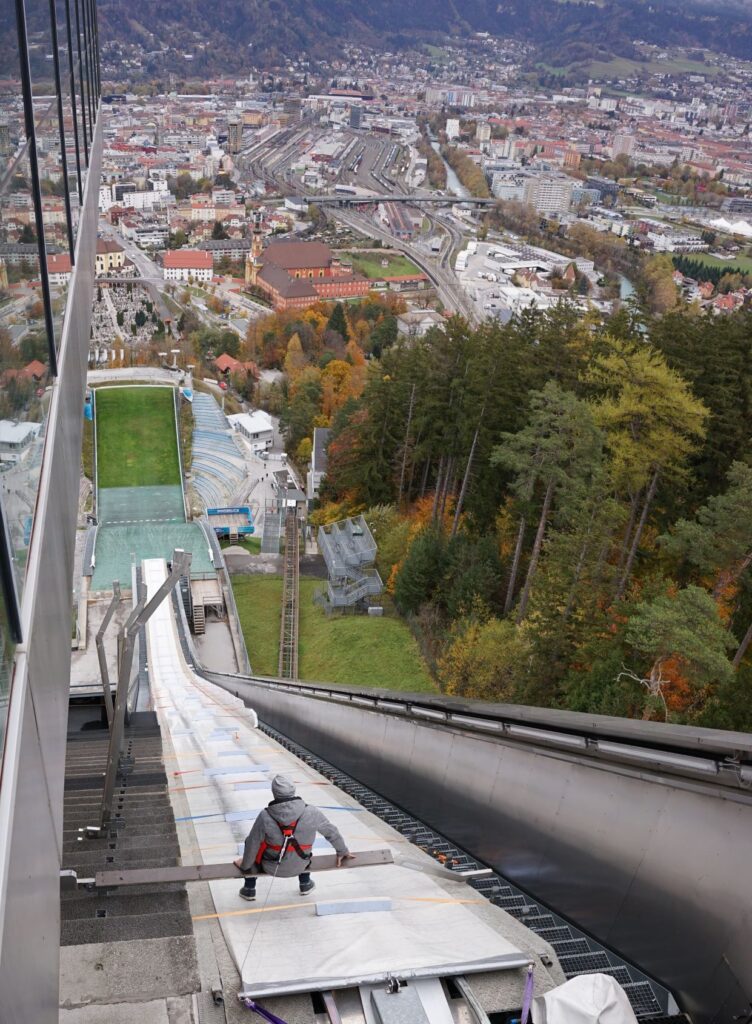
Guests on a tour were taking turns to pop a harness on, get clipped onto a rope, and edge their way out onto the starting ‘seat’. This is literally just a thin plank of wood which sits above the ramp.
‘Walk the plank ya scurvy dog!’
Even if there is no-one actually practising or competing at an Olympic facility, visiting sites such as Bergisel is still a real buzz. Standing in the Stadium, it didn’t take much to imagine jumpers rocketing down the ramp, launching into the air, and soaring down over Innsbruck. I have to admit, as soon as I got home after my very enjoyable time at the Bergisel Ski Jumping Stadium, I checked to see when the next Winter Olympic Games were starting.
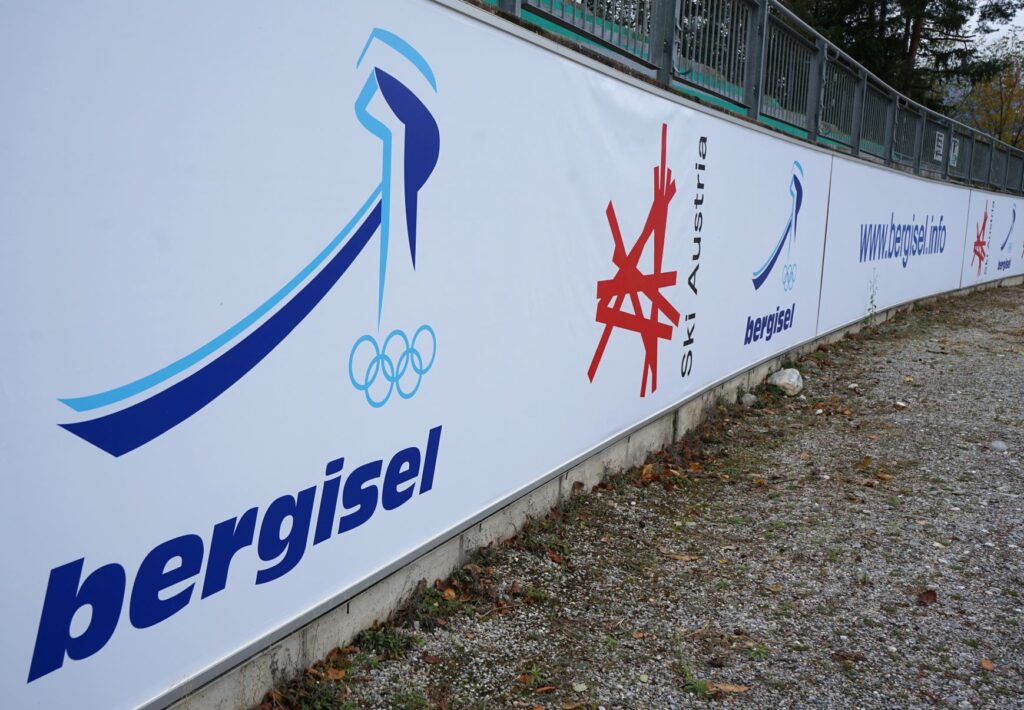
More about the Bergisel Ski Jumping Stadium here
If you liked this post, you may also enjoy Sarajevo Olympic City, Podcast Episode 13. The Panathenaic Stadium
Leave a Reply